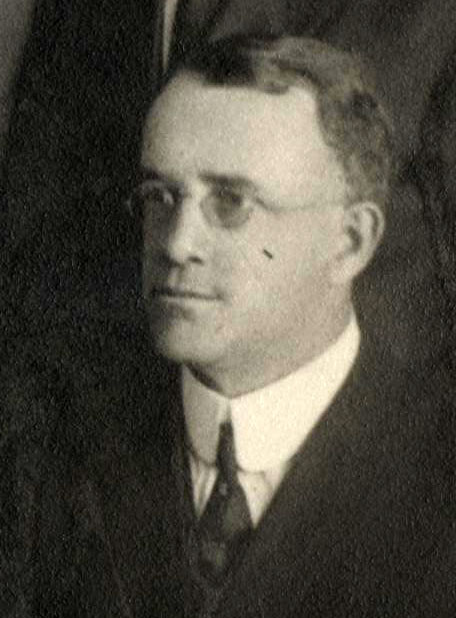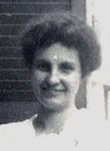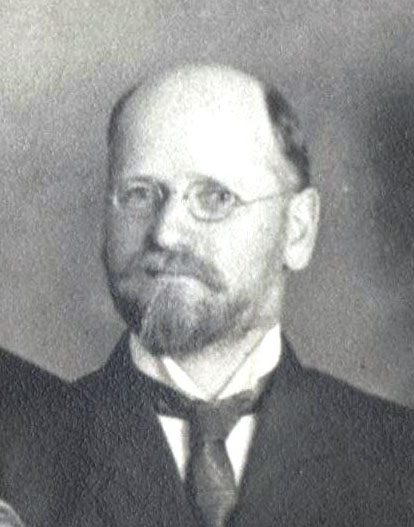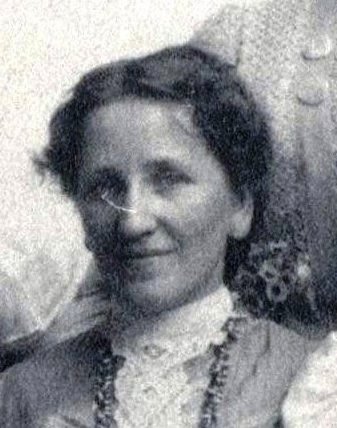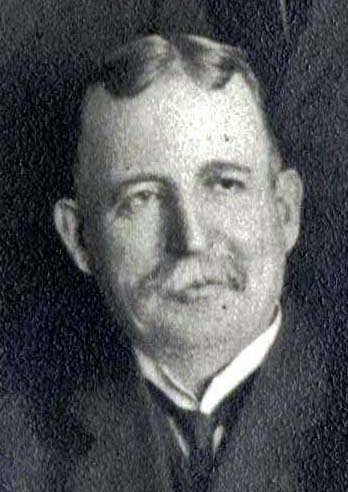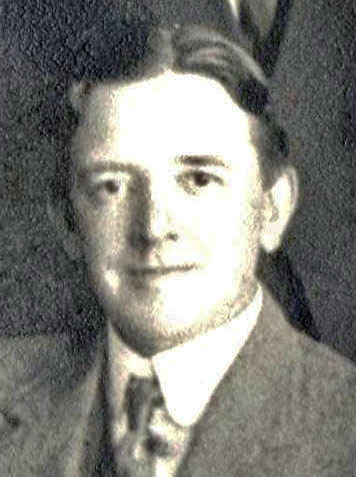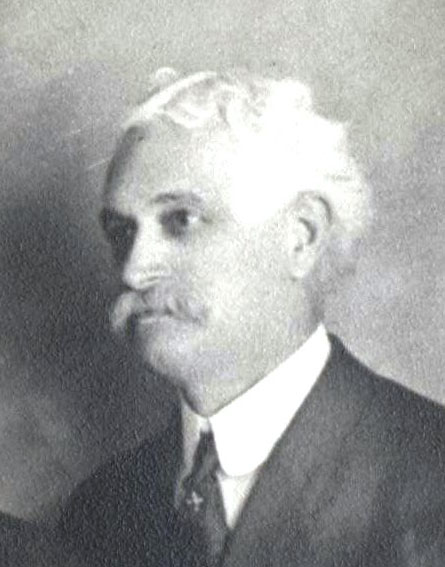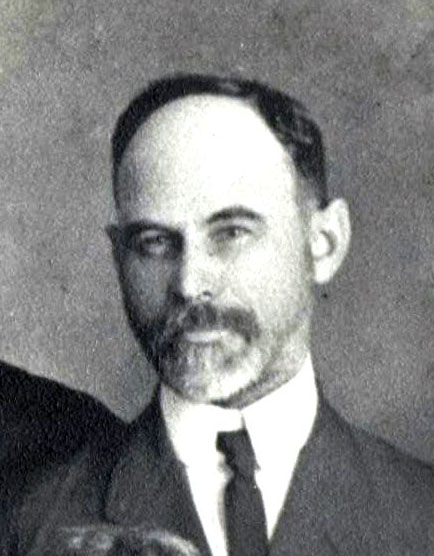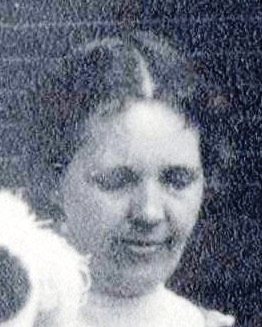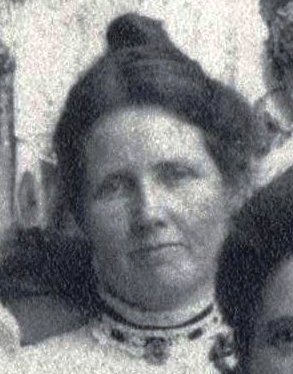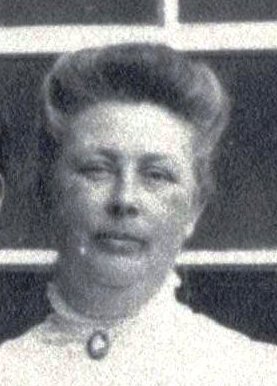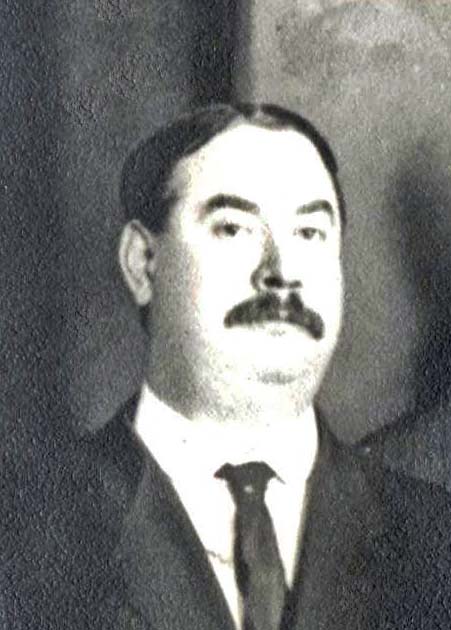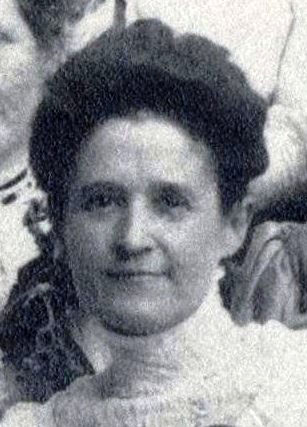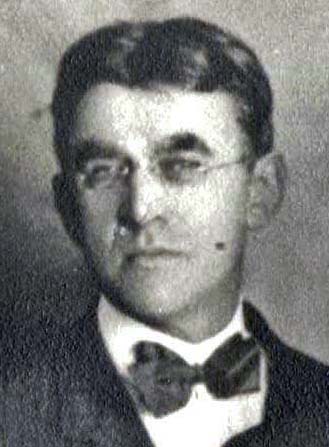

The Chevy Chase Association Literary Club, 1907-1914
Long before the invention of radio and television, longer still before the age of social media, people managed to entertain themselves in a variety of ways. There were, of course, concerts and parties, both public and private; but at the turn of the twentieth century, one of the most popular ways of socializing were clubs organized around a specific interest and their meetings were reported in the local newspapers. In Washington, DC, such clubs were formed by people interested in music, archeology, bird-lovers, dancing, science, travel, and card-playing (bridge and euchre), just to name a few. But one of the most popular was the literary club.
Such was the case in the early years of Chevy Chase, Maryland when nearly all of the new residents were former Washingtonians, mostly from the upper echelons of society. They found the rural-like setting a welcomed change from the hustle and bustle of the big city, yet they had a strong desire to bring their urban cultural life with them. Many maintained their involvement in a few clubs in the city, but the time came when they wanted something closer to their homes in the new suburb.
One of the earliest efforts at providing a cultural base for the young village of Chevy Chase was the formation of the Chevy Chase Free Library Association by a group of young women in 1896 to raise money for the purchase of books. Eventually their efforts led to the construction of the first community building in Chevy Chase, as described elsewhere in this exhibit. Three years later, in the fall of 1899, the Chevy Chase Reading Class was organized by four women, designed to be a weekly gathering for the purpose of reading and sharing the best in English and American literature of the time.

The Chevy Chase Reading Class, in a photograph from 1905. CCHS 1987.05.03. Back Row, left to right: Hattie Case Howard, Fanny Otis Richards, Mary A. Lincoln, Cecily Armes Claude, Minnie N. Schwartzell, Sarah C. Davis, and Gertrude McNulty Stevens. Middle row, left to right: Helen Zimmerman Tucker, Anna Hamlin Hodges, Mary Brackett Robertson, Grace Robertson Bowen, and Helen Porter Childs. Seated in front, left to right: Mary Porter Childs and Elizabeth Evarts Verrill. 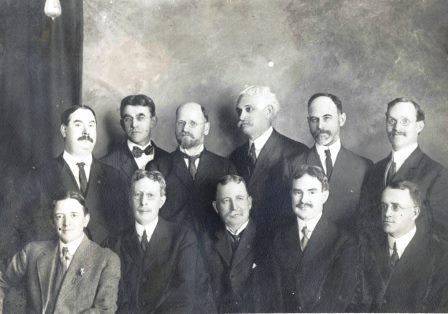
The Honorary Economical Epicureans, a group of men whose wives were part of a luncheon group devoted to "budget conscious" but gourmet meals, c. 1900-1910. CCHS 1988.05.06. Back row, left to right: Eugene Stevens, John Weaver, Thomas Robertson, Charles Parker, Clift Richards, and A.N. Prentiss. Front row, left to right: Clarence Dawson, Edward Mix, William Curtis, Vernon Hodges, and Ray Palmer Teele.
Though the Free Library Association was founded by women of the community, several prominent men of Chevy Chase were also deeply involved in this work, and by 1903, all the officers of the association were men. By this time, fund-raising efforts had become more elaborate, including such festivities as masquerade parties at the members’ homes, and eventually in the newly constructed library itself. Shortly after one of these events in March 1906, the name of the Free Library Association was changed to the Chevy Chase Association. Over the next few months, there was a growing interest in forming a new club – a literary club --for both men and women. On Tuesday night, January 22, 1907, a group of eighteen residents gathered at the home of Eugene and Gertrude Stevens at 8 West Lenox Street to create the Chevy Chase Association Literary Club.
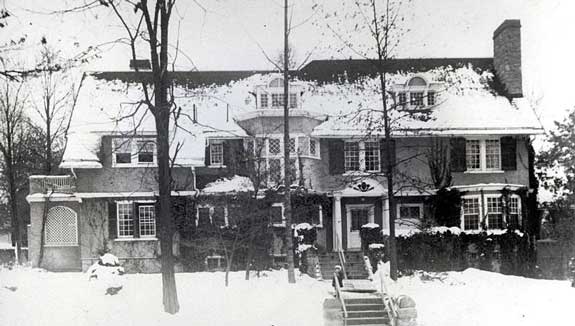
The First Meeting of the Chevy Chase Association Literary Club, January 22, 1907
At this first meeting, it was decided that the new Literary Club would meet monthly on the 4th Tuesday from October through May, with an annual election each October to select officers for the coming year: a president, secretary, and a program committee of three. Refreshments would be permitted, but “of the lightest sort.” There were no dues, but membership was limited to members of the Chevy Chase Association, and thus limited to those who were residents of Chevy Chase.
The first officers of the Literary Club, elected on January 22, 1907:
President: Ray Palmer Teele, an employee at the Department of Agriculture
Secretary: Mary Paschal (Mrs. Samuel Scoville Paschal
Program Committee: Gertrude Stevens, a graduate of Mount Holyoke College and wife of Eugene E. Stevens, a Washington lawyer; Miss Lucille “Lucy” Mackrille, a needlework artist, later known for her work at the National Cathedral; and Thomas E. Robertson, a patent attorney.
Click on a photo to learn more about each officer:
As hosts of the organizational meeting, Eugene and Gertrude Stevens had prepared an initial program. Eugene began by reading one of Forty Modern Fables, written in 1901 by humorist George Ade, followed with several songs by Suzanne Oldberg, the choir director at All Saints Episcopal Church. The evening ended with an essay written and presented by Gertrude Stevens on “The Wit and Humor of George Eliot.”
Among the regular members that first year, in addition to the officers, were Fanny Childs, daughter of the rector of All Saints Episcopal Church; Mary Robertson, wife of Thomas E. Robertson; Eugene E. Stevens; John L. Ridgway, chief illustrator for the U. S. Geological Survey, and his wife Carrie; Charles H. Verrill, Department of Labor statistician and his wife Elizabeth; Appleton P. Clark, Jr., architect, and his wife Florence; William T. S. Curtis, attorney, and his wife Mary; George W. F. Swartzell, real estate broker, and his wife Mary; Mary Teele, wife of Ray Palmer Teele; Clarence E. Dawson, clerk at the U.S. Senate and his wife Katherine; Clift Richards, a lawyer at the Interior Department, and his wife Fanny, a former school teacher; Samuel S. Paschal, attorney, and his wife Mary; and Otis D. Swett, a chemist at George Washington University, and his wife Grace.
Many of the members in the first year, as well as several who are active in later years, appear in the photographs below:
Click on a photo above to read short biographies of the Literary Club members whose photos we have in the CCHS Archive. For other members, click on the names in the following list:
The remaining meetings that year, ending in May 1907, were hosted by Fanny Childs, the Robertsons, the Ridgways, and Lucy Mackrille. Presentations covered a variety of subjects, though none featured a literary author. Charles Verrill presented a paper on the separation of church and state in France; Tom Robertson gave a paper on the wireless telegraph; one evening was devoted to life in England, presented by Lucy Mackrille, Eugene Stevens and Bill Curtis; Clift Richards read an original short story; and an occasional “guessing contest” was held. Florence Clark, wife of Appleton, even entertained the group in March using lantern slides to illustrate a trip she and her husband had taken. Attendance for these first five meetings averaged around 20, a good size for a lively discussion of the various presentations. Based on research about these earliest members, using US Census data and other sources, we know that the members of the Literary Club were all white, and the average age of the group was 41. Many had young children either just before or shortly after they moved to Chevy Chase. And almost all the women were members of the Chevy Chase Reading Class.
Year 2: 1907-1908
Twenty-five people attended the opening of the second season in late October, held at the home of club president Ray Teele and his wife Mary, at 3502 Cummings Lane. During the roll call, members were asked to share their “most interesting experience” from the summer - a time when most of the members left the Washington area for the mountains or shore. This “ice breaker” was followed with “A Glimpse of California,” a presentation by real estate broker George Swartzell -- and then a round of college songs.
“Travelogues” were always popular in the Literary Club. During this second year of Literary Club meetings, Eugene Stevens related his experiences while on a bicycle tour through Bosnia and Herzegovina; W. T. S. Curtis reflected on his time in England; Appleton Clark gave a talk on Mexico; and Samuel Paschal shared his experiences from his two-year law practice in Hawaii before moving to Chevy Chase around 1901. Members also continued to present their original compositions, such as a story or a poem, and Grace Swett and Eugene Stevens often provided musical solos. Stevens, in particular, was an excellent singer and head of the Washington Choral Society. The variety of subjects discussed at the meetings is illustrated by the April 1908 meeting hosted by Clift and Fanny Richards at 9 West Irving Street. John Ridgway, chief illustrator for the U. S. Geological Survey, presented a “paper on birds,” ending with a contest about birds. The last meeting of 1907-1908 was held at the home of Eugene and Gertrude Stevens at 3 West Lenox Street on June 2, featuring a paper by Ray Teele on “immigration in the U. S. and foreign countries.”
Year 3: 1908-1909
By the start of the 1908 fall season on October 27, Clarence and Florence Dorsey had joined the group. Clarence, a “soil physicist,” had recently served in the Philippine Bureau of Agriculture and was currently employed by the U. S. department of the same name. The meeting, attended by 19 members, was held at the home of Lucy Mackrille at 11 West Kirke Street. Lucy, later known for her beautifully embroidered vestments, was the secretary to Bishop Henry Yates Satterlee, first Episcopal bishop of the Washington diocese. Through the urging of the bishop, Lucy studied needlework in Baltimore and England, wrote two books about embroidery, and in addition to creating beautiful banners, vestments, and other elaborate symbols for the new diocese, she returned frequently to England where she developed a company that produced embroidery thread to her specifications.
After again sharing their experiences over the summer, Ray Teele was re-elected president and Charles Verrill was named chairman. Carrie Ridgway was chosen as secretary, and Clarence Dorsey was named to the program committee. The rest of the evening was devoted to a paper on bees, prepared and presented by Lucy Mackrille.
Perhaps due to the Thanksgiving holidays, the regular November meeting was delayed until December 3 and held at the home of Eugene and Gertrude Stevens. Clift Richards replaced Charles Verrill, who had decided not to serve as chairman of the club. As when the Stevens hosted the very first meeting in January 1907, they began the program, with Eugene singing and Gertrude reading an original story. The rest of the evening was taken up by a talk on foreign relations, given by Frederick Van Dyne, an assistant solicitor with the State Department. By the December 29 meeting at the home of the Dorseys on Lenox Street, seven new members had joined since the previous meeting, including Harry Giovannoli, who worked at the Internal Revenue Service, and his wife Carrie; Jesse Bowen, a Labor Department statistician, and his wife Grace; and George C. Wedderburn, from the Patent office, and his wife Gertrude. As the roll was called, members were asked to share memories of their Christmas holidays. Clarence Dorsey then presented a paper based on his experiences in the Philippines, followed by a geography contest. Twenty-five were in attendance.
Mary, Queen of Scots, was the subject of the January 1909 meeting, held at the home of Grace and Otis Swett at 15 Grafton Street, with 18 members and 3 visitors present. Harry Giovannoli, one of the newer members, presented a story he had written. The February meeting, moved to March 16, took a “dramatic” turn in two ways: it was held at the Chevy Chase Library, and it involved dramatic farces. The first was “Serious Situations in Burleigh’s Room” from the 1903 edition of Harvard Stories: Sketches of the Undergraduate, by Waldron Kitzling Post, followed by The Rivals and The Mouse Trap, the latter by William Dean Howells. “Cast” members for these plays included Florence and Clarence Dorsey, Mary Robertson, Fanny Richards, Gertrude Wedderburn, and Harry Giovannoli.
For the first two years, the club focused primarily on original stories and essays submitted by members and occasional lectures on contemporary topics. At the March 30 meeting was held in the home of non-members John and Elizabeth Yerkes at 6000 Connecticut Avenue (John Yerkes was Commissioner of the Internal Revenue Service.) The program committee suggested a new direction, as outlined in a “memorandum” by committee chair Eugene Stevens. The proposal was made to “take up a definite line of literary work, both entertaining and instructive in its nature, by reviewing in a simple manner the authors whose work has gained a permanent place in the literature of the world.” Fearing that the members may be “in danger of forgetting, or of remaining in ignorance, some of us, of the literary landmarks, particularly in English and American letters,” the committee recommended “that the lives and literary work of Dr. Samuel Johnson, Laurence Sterne, Edgar Allen Poe, Oliver Wendell Holmes, Charles Reade, Anthony Trollope, Edward Bulwer Lytton, and Thomas Mallory receive the consideration of the Club during the coming season of 1909-10.” Original stories and essays would still be allowed, as well as composite stories - a single story to which individual chapter were added by different members. The proposal was adopted by the sixteen members present. 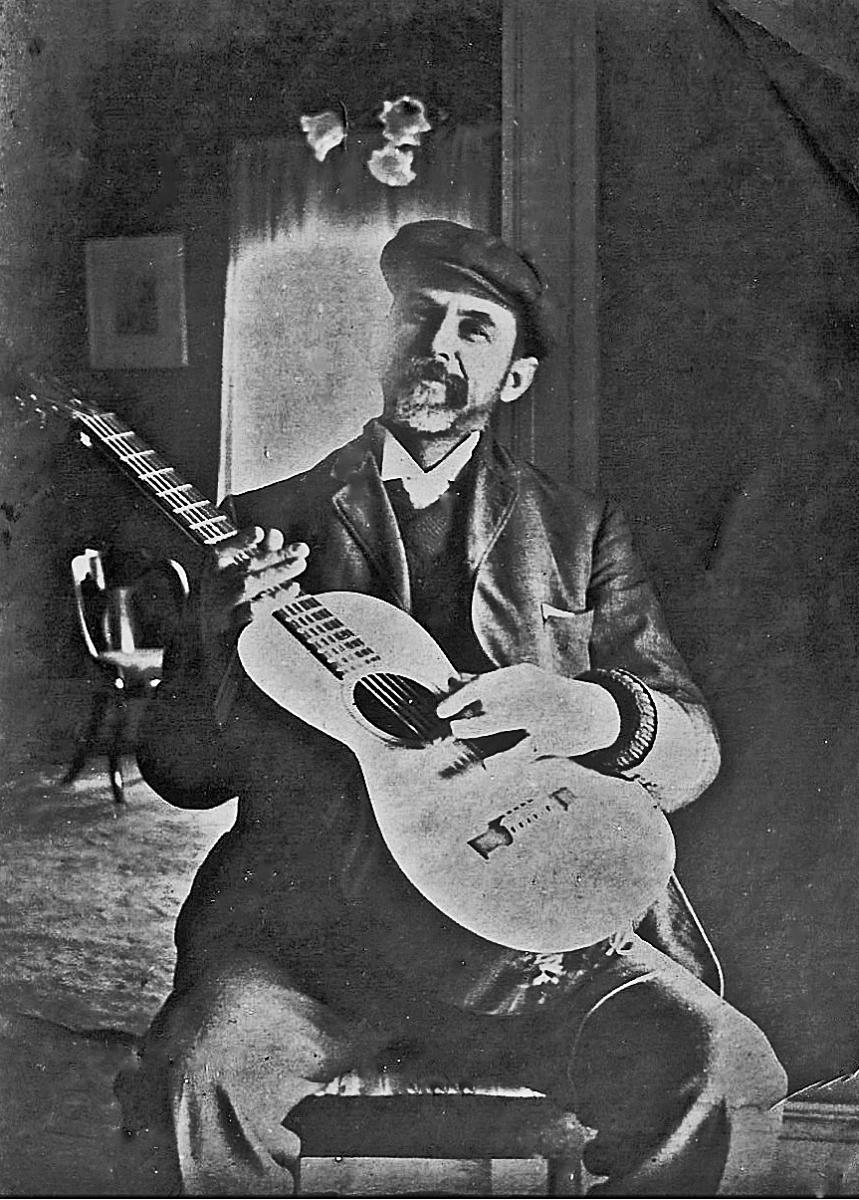
The April 1909 meeting was held at the home of Jesse and Grace Bowen, with 20 members present. Gertrude Wedderburn read selections from Washington Irving’s “Knickerbockers,” and Fanny Childs treated the members to selections from “The Life and Sayings of Mrs. Partington,” a collection of humorous stories by Benjamin P. Shillaber.
The May meeting was held at the home of George and Gertrude Wedderburn, 8 East Irving Street, with 28 members and 9 visitors present, one of the highest turnouts to date. The program was diverse: Helen Childs (sister of Fanny) read selections from Josh Billings, the American humorist many believe second only to Mark Twain; Lucy Mackrille added to the lightness of the evening with examples of the “wit and humor” of Benjamin Franklin; and Clift Richards read his original story entitled “The Adventures of a Bear.” Somehow, in the middle of all this, Clarence Dawson managed to bring his fellow members up to date on “The New Departure in our Postal History,” perhaps convincing everyone that it was indeed time for the summer break.
In May, Eugene Stevens presented the projected schedule of programs for the 1909-1910 season, including Robert Burns, Samuel Johnson, Benjamin Franklin, Anthony Trollope, and Sir Thomas Mallory, with some original stories mixed in.
Year 4: 1909-1910
Twenty-four members and 4 visitors gathered in the living room of Ray and Mary Teele at 3502 Cummings Lane the night of October 26, 1909, to start the fall session. Eugene Stevens began the evening with a paper on “The Humor of Laurence Sterne,” an 18th century Anglo-Irish novelist (i. e., The Life and Opinions of Tristram Shandy). Ray Teele followed with a talk about Artemas Ward, the Revolutionary War general. Albert D. Allen, editor of The Washington Times, concluded the formal program with a talk on the dramatic arts. Before the evening ended, however, the acting chairman Clift Richards proposed that the Literary Club separate itself from the Chevy Chase Association and become an independent organization. After considerable discussion, the matter was tabled for a later time. The subject never again appears in the minutes.
Clift and Fanny Richards hosted the November meeting which featured a talk by Harry Giovannoli on “The Kentucky Mountaineer in Fiction and Reality,” followed by a reading from the works of Indiana poet James Whitcomb Riley by Jesse Bowen. The meeting ended with the election of Clift Richards as chairman and Carrie Ridgway as secretary. At the December meeting, Harry Giovannoli was chosen as program chair, which included presentations on Civil War figure Edwin Stanton, humorist/clergyman Bob Burdette, and Edgar Allen Poe. This meeting was attended by just seven members, the lowest to date.
Attendance recovered in January 1910 when 27 people gathered at the Giovannoli home on Raymond Street to hear a composite story in four chapters, each written by Harry Giovannoli, Clift Richards, Charles Parker, and Allen Albert. Carrie Ridgway, Gertrude Stevens, and Fanny Richards read selections from Robert Burns.
One of the more interesting meetings, seen from the perspective of a hundred years later, was held on February 22, 1910 at the home of John and Annie Weaver, with attendance of more than forty people, including 15 guests. In between a reading by Jesse Bowen of the writer Will Carleton and description of travel to Robert Louis Stevenson’s “treasure island” by Dr. Samuel Mellott, there were several presentations focused on fiction, poetry, and songs about or by African Americans. The discussion was described in the Literary Club ledger:
Both Joel Chandler Harris (1848-1908) and Paul Laurence Dunbar (1892-1906) had died a few years earlier. Dunbar, the acclaimed African American poet, lived in DC from 1897 until shortly before his death. Contemporary newspaper accounts suggest that his poetry was recited by both black and white residents at many different events around the city. He worked at the Library of Congress, and was the first poet to read there. His poetry was sometimes written in dialect, but not exclusively. One of his most famous poems, "Sympathy," is well known today for the refrain "I know why the caged bird sings..." Harris, a southern white newspaper editor, was famous for his Uncle Remus stories, based on stories that black caregivers had told him as a child. Thomas Nelson Page (1853-1922), a white Virginian – a lawyer, writer, and later a diplomat under Woodrow Wilson. Just a month before the Literary Club meeting, Page was elected President of the National Society of Fine Arts. His short stories and novels were well-known, especially one of his first, In Ole Virginia. In his writing, Page promoted a view of slavery in the “old South” which represented life as better before the Civil War and Reconstruction. Since the parents of both Mary Robertson and Gertrude Stevens were involved in missionary work and/or the Freedman's Bureau, they might have had a different perspective.
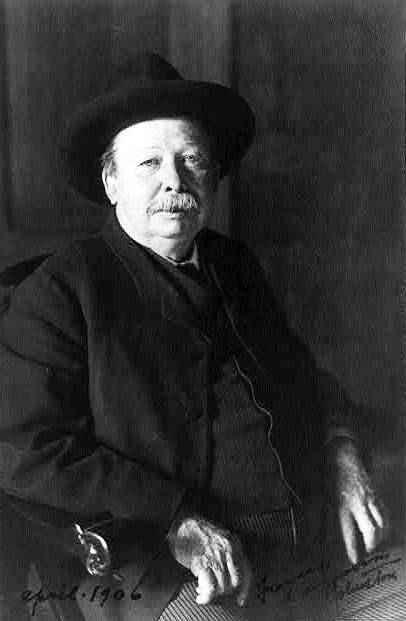
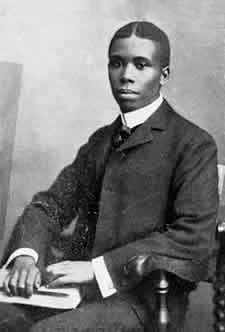
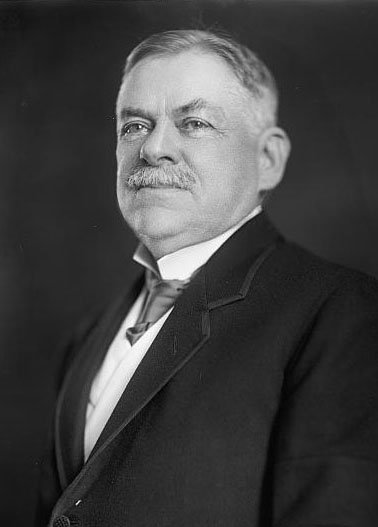

But the minutes of the meeting tell us nothing about the discussion of these writers and their perspectives, or the views of the members present on the representation of racial and cultural differences in fiction and poetry, let alone, the larger questions about race and racism in this period. Despite the silence of the minutes, we do know from contemporary news accounts that around the time of the founding of the Literary Club, there was a well-publicized controversy over the efforts to sell housing lots to African Americans in a subdivision on the old Belmont farm at the corner of today’s Western and Wisconsin Avenues. This was met with strong resistance from the white residents of Friendship Heights. The close geographical proximity to Chevy Chase Village suggests that most members of the Literary Club must have been aware of this failed development, but we do not know if they were for or against it. Again, the minutes do not address many current issues, and there is no mention of Jim Crow or any racial discord in Chevy Chase or the greater metropolitan region.
Over the next three months, meetings were held at the homes of Wilmer and Lillian Latimer, new members during the current year, at 14 Newlands Street with 26 present (Latimer was a professor of law at George Washington University); Charles and Sarah Parker on Newlands Street; and Dr. William K. and Eleanor Butler, also new members and he an ophthalmologist. Subjects included works by Edward Bulwer Lytton, English novelist, the humor of Ben Franklin in Poor Richard’s Almanack; American poet Eugene Field, and the conclusion of Lucy Mackrille’s essay on Sir Thomas Mallory. Scattered among these was a composite story by Lillian Latimer, Emily Prentiss, Mary Teele, and Janet Albert. In March there was a presentation about the amphitheater and gladiatorial combat.
Year 5: 1910-1911
The fourth season of the Literary Club began on October 25 at the home of Albert and Emily Prentiss on Cummings Lane. Fanny Richards read from the Mahabharata, an epic poem about the origin of Hinduism in India. Her husband, Clift, was elected president of the club and Mary Robertson became secretary. Subjects for subsequent meetings that fall varied from a review of the Oberammergau Passion Play by George Swartzell to reminiscences about Cape Cod by Carrie Ridgeway and Katherine Dawson. 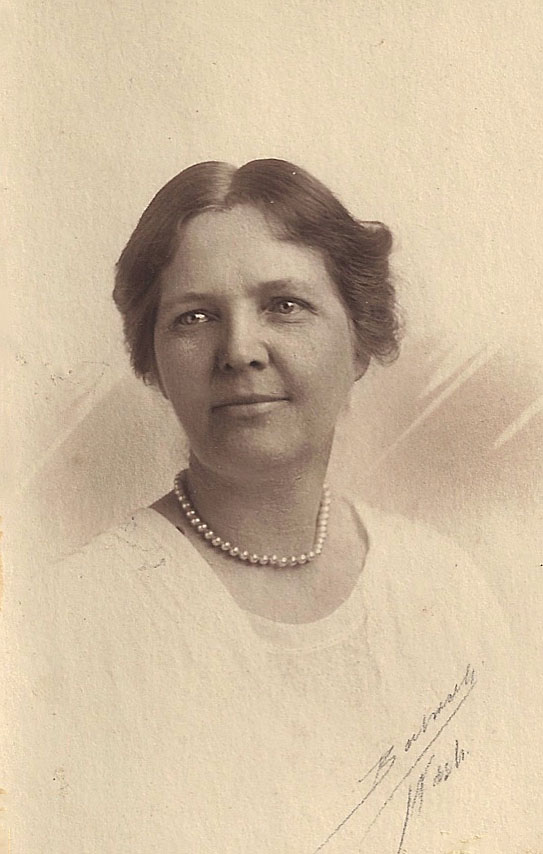
The February 1911 meeting was devoted to humor. Held at the home of Jesse and Grace Bowen with 17 members present, Dr. Samuel Mellott entertained the group with selections from Aristophanes to Mark Twain, followed by several poems from The Sweet Singer of Michigan Salutes the Public, by Julia A. Moore. Critics had never been kind to Ms. Moore, one writing that “hers was a poetic license that ought to have been revoked.” The secretary of the Club wrote that the poet “would have been surprised at the merriment caused by her most serious verses.”
George Dalzell, John and Carrie Ridgway, and Samuel and Mary Mellott served as hosts for the remaining spring meetings. At the May meeting, the Program Committee was charged with serving as a membership committee to seek new members. One reason may be reflected in the fact that several changes in membership due to resignations or relocation. No longer mentioned in the minutes were Albert and Janet Allen, the Childs sisters, Appleton and Florence Clark, Wilmer and Lillian Latimer, Clarence and Florence Dorsey, Ray and Mary Teele, Albert and Emily Prentiss, George and Gertrude Wedderburn, Samuel Paschal (though his wife remained a member), and Charles and Elizabeth Verrill.
Year 6: Year 5: 1911-1912
The 1911-1912 season started out slowly with the first meeting in November rather than October. At that meeting, hosted by William and Mary Curtis and attended by 29 persons, Clift Richards was elected president and Lucy Mackrille secretary. Two new members, Caroline Raber and Mary Potbury, were welcomed into the group. (Their daughters would join later.) Clair R. Hillyer, a Department of Commerce employee living at 3 East Kirke Street, also began attending meetings. The December meeting was cancelled, perhaps due to the fact that Christmas Day fell on the Monday before the regular meeting.
A cold spell continued for several weeks at the beginning of the year, with a low of 7 degrees the night before the January 30 meeting of the Literary Club at the home of Charles and Sarah Parker at 12 E. Melrose Street. Lucy Mackrille noted in the minutes that 18 members and 1 guest “were experiencing the coldest weather in the memory of the oldest inhabitants. Eighteen members & one guest braved the elements & arrived at the Parkers sound in limb.” In spite of the cold, the meeting was kept on a light note with a contest centering on “Pictures of Celebrities.” The men’s prize (a bottle of ink) was won by Clarence Dawson, while the Caroline Raber won a fan as the female winner.
Meetings in February through May were held at the homes of the Robertsons, Weavers, Richards, and Giovannolis, covering such topics as a post card display on “America First,” illuminated by “Alladins [sic] Wonderful Lamp,” “Precious Stones” by jeweler George Spier, an evening of Persian poetry, translated by Edward Fitzgerald, and a talk by Clarence Dawson on “Crank Letters sent to Government Officials.” The 1911-1912 season ended with the decision to change the night of future meetings from Tuesday to Friday.
Year 7: 1912-1913
The sixth season began on October 25 at the home of Clair and Helen Hillyer at 3 East Kirke Street with the election of Lucy Mackrille as president, John Weaver as vice-president, and Mrs. Clark as secretary (probably Emma Clark, wife of The Rev. Lucien Clark who had just started the Chevy Chase Methodist Episcopal Church). Members were asked to give 5-minute “vacation sketches.”
Several of the remaining meetings had a particular “travel” theme each month. In November, 35 members and 12 visitors were treated to a travelogue on South America, led by Frederick Van Dyne of the State Department. New England, Italy, Canterbury (England), and the national parks were also covered from January through May, all through the personal experiences of members. At the December meeting, held at the library, a review of The New Word, a book by Allen Upward was discussed. The book used the word “scientology” for the first time, though not in reference to the religious organization years later. Instead, the term referred to the tendency to treat science as “unquestionable doctrine.” After such a weighty topic, the rest of the evening was spent dancing.
This was one of the best attended seasons in the history of the Literary Club, averaging about 34 people at each meeting. In May alone, 60 members and guests attended the program on national parks, held at the home of John and Ida Hulse at 3 West Lenox Street, former home of Eugene and Gertrude Stevens. Unfortunately, Ida Hulse died just four months later on September 5 while vacationing in Weirs, New Hampshire. She and her husband had been married exactly one year and two days.
Year 8: 1913-1914

At the December meeting, held at the home of Lucy Mackrille, a composite story to which Giovannoli had contributed was read by Charles Parker and Clift Richards, the other two authors. At the close of the meeting, the members approved a “vote of thanks of the club be extended to Mr. G. for his interesting paper & regrets for his leaving Wash. to take up abode & word in Ky.” He was then named an honorary member.
Though the Literary Club offered its members a monthly respite from the world of work and family, it did not always ignore wider issues of the day. One of the volatile subjects in the Washington area just prior to the Club’s March 1914 meeting was a debate occurring in Congress over whether or not the U. S. should be exempt from having to pay tolls for use of the Panama Canal. On March 20, the Club met at the Chevy Chase Library to hear George Dalzell and Thomas Robertson hold their own debate on the issue, Dalzell arguing for toll-free use and Robertson defending the tolls. After the debate, "dancing was indulged in until a late hour,” according to The Evening Star.
The minutes of the Literary Club end with the March 1914 meeting. After more than eight years in existence, however, they did meet for what appears to be the last time on April 17 at the home of Charles and Sarah Parker on Newlands Street to hear a presentation on “An Evening on Birds.” No minutes were kept, perhaps because it was the last formal meeting of the club, but news of the meeting was reported in the local newspapers.
Clubs and associations have their ups and downs, their own "life spans" as it were, but the record of eight years of the monthly meetings of the Literary Club, including the opportunities for dancing at the end of the literary discussions, help us learn more about the social and cultural life of the new suburb of Chevy Chase, Maryland in the early decades of the 20th Century. The meeting notes do not reveal their discussions in detail, however; we are left to wonder what they said to each other when they spoke about the works of Dunbar, Harris and Page. Nevertheless, their choice of books and topics reveal their interest in works of the past as well as the present, their interest in the natural world -- the National Parks, for example -- as well as some of the political issues of the day, such as the Panama Canal. They were readers, perhaps even passionate readers, and their interest in all things literary brought these new residents and new neighbors together.


